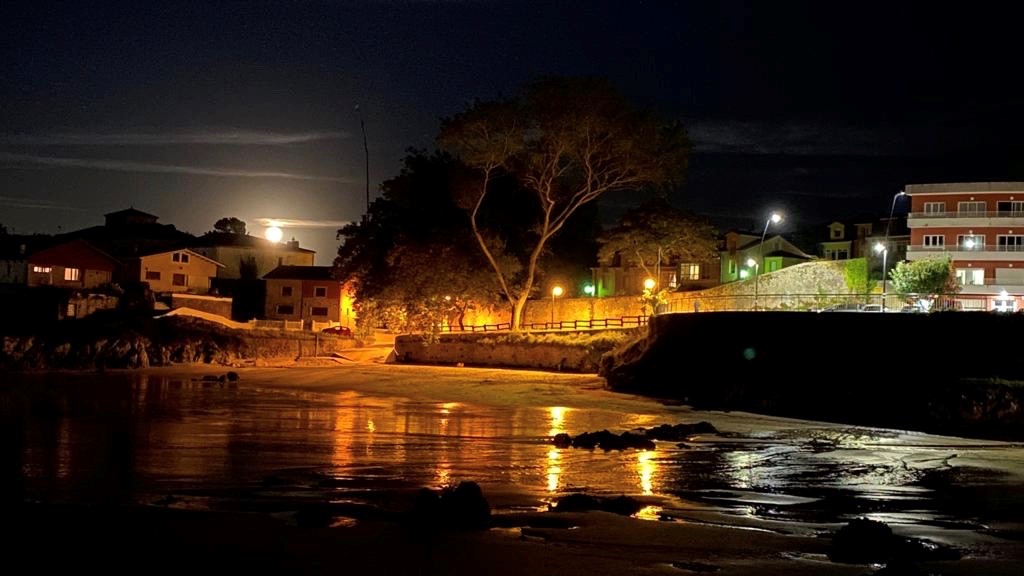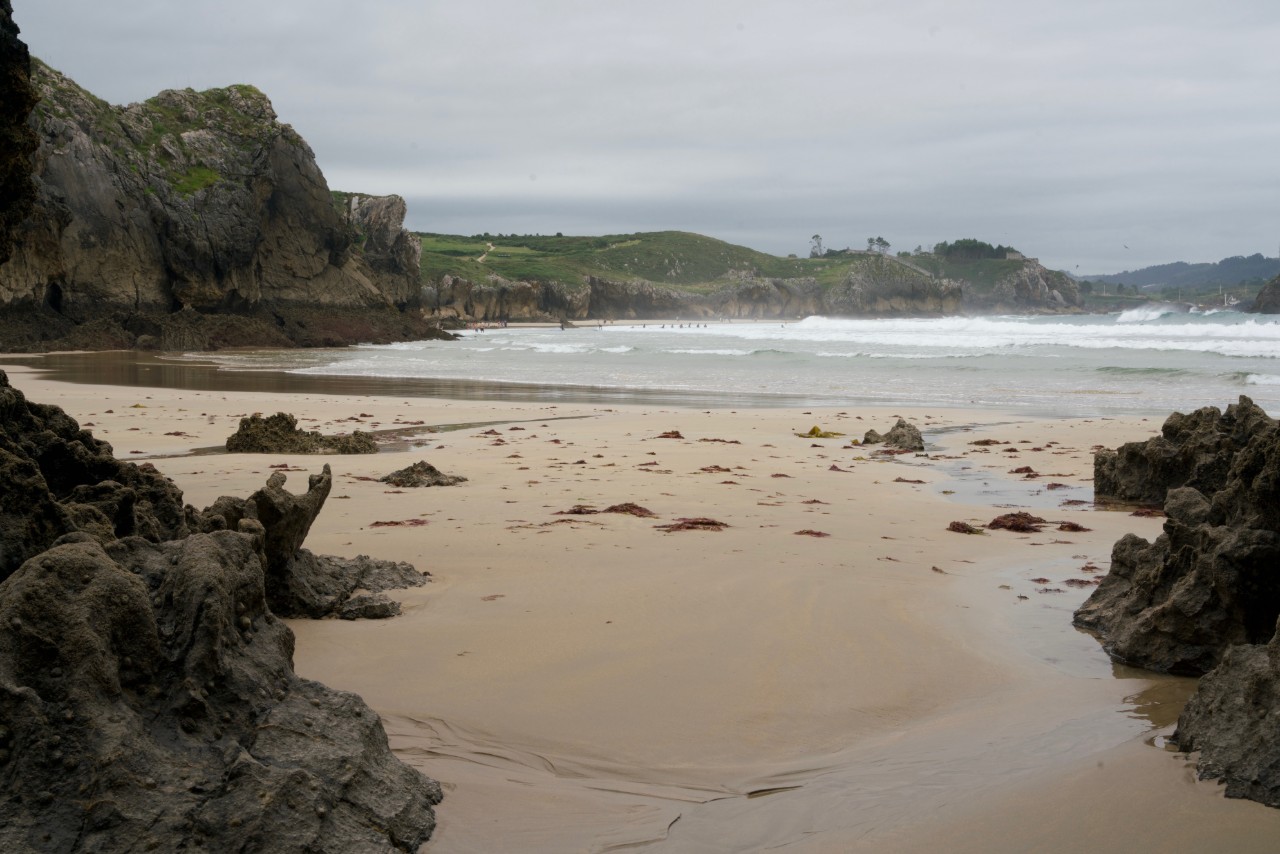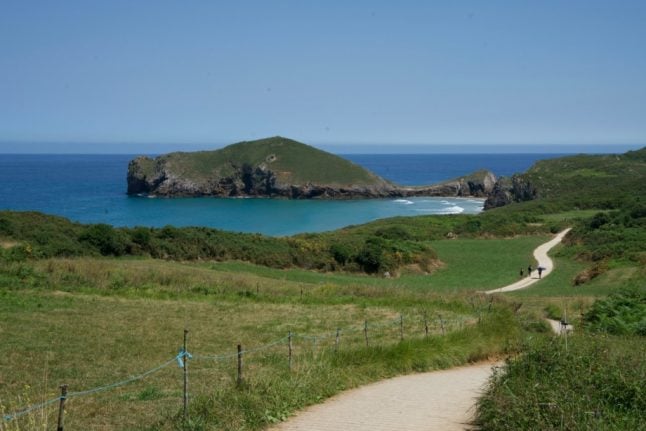With temperatures sometimes reaching the low 40s (that’s over 100F for you Americans) summer can be miserable in Madrid. To escape the heat, my wife and I get out of the city every August and head North, spending a couple weeks in small villages scattered along the coast between the Basque Country and Asturias.
The problem this year, of course, is the coronavirus. And while Spain has the virus mostly under control, we were worried about how we would get North and where would we stay. I don’t have a European driving license, and my wife doesn’t drive. We also have a little baby, meaning we don’t want to take a bus as they don’t have car seats. So should we even go?
After a few weeks debate, we finally decided to meet some friends from Asturias in a small village called Celorio. We’d been there a couple of times in the past, and while it doesn’t offer great restaurants with inexpensive, quality food like other villages on the coast, the beaches are just fantastic. Getting there required us breaking the trip up into several stages: a train to Oviedo, and then another to Llanes, where friends could pick us up, as it’s only a ten minute drive from Celorio.
We started off with an early train out of Madrid, hoping the baby would go back to sleep. Thankfully, she did and it was mostly a peaceful ride. Instead of doing the entire 5-hour trip to Oviedo, we decided to stop halfway and spend the night in León. We checked into a hotel about fifteen minutes from the train station, and then hit the streets to check out the city.
Leon was founded as a Roman garrison almost two millenia ago during Rome’s conquest of Iberia, and today serves as the capital of the Leon province.
It’s not a large city—only around 125,000 people—but we found it beautiful and perfect for a day trip. We followed the main drag up Avenida Ordoño II, which changes names a few times before coming to the Plaza de Regla, site of the city’s cathedral, an enormous gothic structure dating from the 1400s.
Along the way, we passed the Casa Botines, designed by the famous Catalan architect Antoni Gaudi, and which is now a museum. Like many Gaudi designs, this building is impossible to ignore. The building’s stones have been cut and chipped into facets, making the structure glow like a crystal.
We wandered the streets for several hours, sat in plaza to have some local food, and then called it a day. That next morning, we caught the train to Oviedo, and then another to reach Lllanes. Our friend Maria showed up and drove us the final leg to Celorio, where we were staying in a small apartment, attached to a larger house, with a small yard.
The apartment was spartan but a good price for only €100 a night. The only problem was the field across the street. In small Spanish villages, people prefer to house animals in their fields to keep the grass down instead of mowing. Sometimes, you’ll see a donkey, other times a small herd of sheep. But the owners across the road kept ponies, and ponies breed flies. Every day I had to kill about a half dozen that came into our place.
Celorio is a tiny village, reaching peak population during the summer, when residents from Oviedo, Bilbao and Madrid pour in to stay at vacation homes. During the winter, the population drops to around 100, although one resident told me this is fine. Both of Celorio’s small food stores stay open during the winter, as does one bar, and one restaurant.
“How many bars can you drink in at one time?” a resident asked me, explaining how he stays sane in such an isolated village during the rainy winter months. “One,” he answered. “And I only need one restaurant.”
The best that Celorio offers are the beaches. The rocky coast of Asturias cuts the shoreline into coves, where the beaches change throughout the day as the tide washes in and out. Some beaches only exist at low tide, so you sometimes have to plan when to show up. The main beach at the village center is Palombina, which is ringed by several small restaurants and beach bars called “chiringuitos.”

View from the chiringuito on Palombina beach at night. Photo: Eliana Martínez
You can find a much better beach with about a thirty minute walk, down a dirt path, through cow pastures and gardens, then down a staircase cut into the rocky hillside, to reach Playa de San Martín. The sand here is soft and the waves attract surfers and day trippers bringing sun umbrellas, and coolers with drinks and food. You should also expect nudity.
When the tide fell one afternoon, we ventured around the rocks on the playa’s East side to a beach that rises fresh out of the ocean every day. Two young women in their twenties suddenly ripped off their bathing suits and ran naked and giggling into the water, swimming out a few dozen meters into the sea, and around another set of rocks, to a different beach hidden from view and only accessible from the ocean.

A hidden beach appears at low tide
Days in Celorio fit into a rhythm, starting in the late morning as people decide which beach to walk to and where to eat lunch. Sometimes we took sandwiches or empanadas; other times we met friends at a restaurant to share platters. Late afternoons were often a time to nap, or at least to head back home for a shower before the night started.
Evenings start with drinks at one of the chiringuitos, where most people drink beer or cider. The cider comes in one liter bottles, passed around the table, and poured into large cups at a height so that the liquid bangs off the side of the glass and slightly foams. It’s then drunk quickly in one draught before the bubbles disappear, with any excess then thrown to the ground. Every ten minutes or so, someone grabs the bottle and fills up everyone’s glass for another round.
The only thing to worry about is the rain. This is Asturias and the green hillsides exist because rain comes pretty much every few days, even in August. So check the weather every day, bring sunscreen and enjoy the cool weather.
READ ALSO:
Escape the heat: Eight places in Spain where it doesn't get too hot in summer



 Please whitelist us to continue reading.
Please whitelist us to continue reading.
Member comments